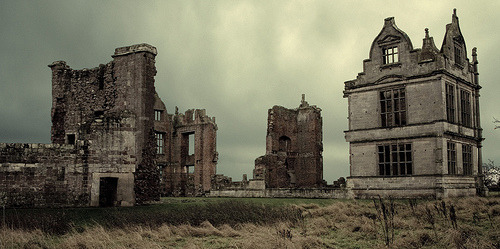Warstone Lane Cemetery is located at the heart of Birmingham's jewelry quarter. It was founded in 1848 and is also known as Brookfields Cemetery. Like many cemeteries of the mid-Victorian era, Warstone Lane Cemetery was seen as a solution to the problems caused by an ever-increasing population. Birmingham was the heart of the industrial revolution and many people flocked to work here, especially in Birmingham's ever expanding factories and railways. Poor sanitation, lack of medical care and poverty ensured that mortality rates, especially in children, were extremely high and this lead to an overwhelming amount of dead, of which churches simply could not cope with.
The Cemetery was constructed in the style of the exquisite London necropolises such as Highgate Cemetery (1839) and Nunhead Cemetery (1840). The Birmingham Church of England Cemetery Company also took inspiration from Warstone Lanes' 'sister' cemetery, Key Hill. Key Hill Cemetery was established in 1836 not only as response to an urgent need for burial space but as a place of internment for those who were non-conformist.
Arguably, the most impressive feature of the cemetery is the catacombs. Warstone Lane Cemetery was built near a sandpit quarry (operated by the Guardians of the Poor to provide out-relief to the unemployed after the Napoleonic Wars). This meant that burials could be quite difficult and thus
catacombs were proposed and promptly constructed as a tiered burial ground. The catacombs were open to the public (wow!) but closed in response to the Birmingham Cemeteries Act. This Act stated that the catacombs must be sealed with lead or pitch due to the 'unhealthy vapours' (rotting corpse smell?) that was leaking out. I have read that there are plans to re-open the catacombs... please!
catacombs were proposed and promptly constructed as a tiered burial ground. The catacombs were open to the public (wow!) but closed in response to the Birmingham Cemeteries Act. This Act stated that the catacombs must be sealed with lead or pitch due to the 'unhealthy vapours' (rotting corpse smell?) that was leaking out. I have read that there are plans to re-open the catacombs... please!
There once was a burial chapel, St Michael's, which briefly operated as a parish church. This building, which boasted a 116 ft spire and a Bramah lift to take coffins down into the catacombs, was demolished in 1954 having been extensively damaged in the Blitz. The Cemetery Company’s offices in Warstone Lane, which also formed the main vehicular entrance, were sold to a private company. The sole remaining feature of the original Victorian cemetery is the catacombs. These catacombs are more visually imposing than those at Key Hill, which were completed in 1880.
Warstone Lane Cemetery was acquired by Birmingham City Council in 1951 and burials were stopped around 1982.
My Dark Travels Rating 7/10
If you enjoy the history and stunning architecture of a cemetery then you will enjoy visiting Warstone Lane Cemetery. My favourite feature was indeed the tiered catacombs. It did remind me of the Circle of Lebanon catacombs at Highgate Cemetery. However, due to the Birmingham Cemeteries Act, they have been plastered shut and look very miserable indeed. There also seems to be a very alarming litter problem in the cemetery, which really did upset me. We found socks, plastic bags, coffee cups, crisp packets and even toothpaste (!) strewn around the graves. There were also a couple of youths smoking something that smelt suspicious...
I would urge Birmingham City Council to sort this problem out because the cemetery holds a wealth of history that is integral to the rich fabric of the Black Country. I hear that there is a 'Friends' society that looks after the cemetery as well, so if they are reading this and need any volunteers to help clean up the cemetery, I'm available!
On street meter parking is accessible around the cemetery and it is located next to the Jewelry Quarter train station. The cemetery is free to visit but it closes at 5pm each day.
DT x









